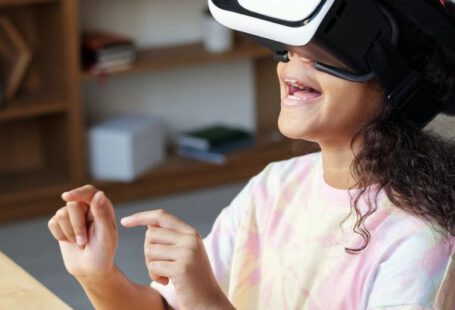The evolution of technology has revolutionized every aspect of our lives, including education. Learning technologies have been instrumental in reshaping the future of education, offering innovative solutions to age-old challenges and opening up new possibilities for both students and educators. From online learning platforms to virtual reality simulations, these technologies are enhancing the learning experience and transforming the way knowledge is accessed and shared. In this article, we will explore the impact of learning technologies on education and how they are shaping the future of learning.
Enhanced Access to Education
One of the most significant ways in which learning technologies are shaping the future of education is by enhancing access to learning opportunities. Online learning platforms and digital resources have made education more accessible to individuals regardless of their geographical location or socioeconomic background. Students can now access high-quality educational content from anywhere in the world, breaking down traditional barriers to learning. This increased accessibility is particularly beneficial for individuals who may not have had the opportunity to pursue education through traditional means.
Personalized Learning Experiences
Learning technologies have also enabled personalized learning experiences, catering to the individual needs and preferences of students. Adaptive learning platforms use algorithms to analyze the strengths and weaknesses of each student, providing customized learning paths that are tailored to their unique learning styles. This personalized approach ensures that students receive the support and resources they need to succeed, leading to improved academic performance and engagement. By adapting to the individual needs of students, learning technologies are revolutionizing the way education is delivered and experienced.
Interactive and Engaging Learning
Traditional teaching methods often struggle to engage students and maintain their interest in the subject matter. Learning technologies have introduced interactive and engaging learning experiences that captivate students and make learning fun. Virtual reality simulations, gamified learning platforms, and interactive multimedia resources are just some of the tools that are transforming the classroom into a dynamic and stimulating environment. By incorporating elements of interactivity and gamification into education, learning technologies are making learning more enjoyable and effective for students of all ages.
Real-World Application of Knowledge
Learning technologies are also bridging the gap between theoretical knowledge and real-world application. Simulations and virtual laboratories allow students to apply their knowledge in practical scenarios, giving them hands-on experience in a safe and controlled environment. This hands-on approach to learning enhances students’ understanding of complex concepts and prepares them for real-world challenges they may encounter in their future careers. By providing opportunities for practical application of knowledge, learning technologies are equipping students with the skills they need to succeed in an increasingly competitive and dynamic job market.
Continuous Learning and Professional Development
In today’s fast-paced world, the need for continuous learning and professional development is more critical than ever. Learning technologies are facilitating lifelong learning by offering flexible and convenient options for individuals to upskill and reskill throughout their careers. Online courses, webinars, and digital certifications provide professionals with the opportunity to stay current in their fields and acquire new skills that are in demand. By enabling continuous learning and professional development, learning technologies are empowering individuals to adapt to the changing demands of the workforce and advance their careers.
Embracing a Future of Learning Technologies
As we look ahead to the future of education, it is clear that learning technologies will continue to play a pivotal role in shaping the way we learn and teach. From enhancing access to education and personalizing learning experiences to promoting interactive and engaging learning, these technologies are revolutionizing the education landscape. By embracing the possibilities offered by learning technologies, we can create a future where education is accessible, engaging, and tailored to the individual needs of every learner. The future of education is bright, thanks to the transformative power of learning technologies.





